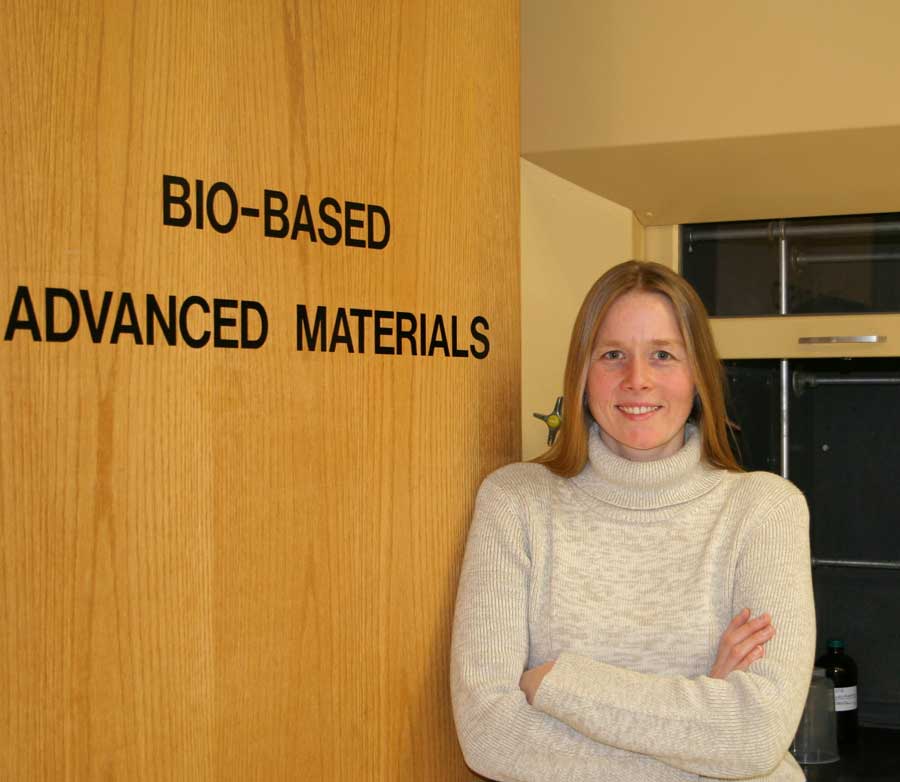Nanocrystal research could lead to new vaccine and computer inks

Maren Roman, assistant professor in the wood science and forest products department of the College of Natural Resources at Virginia Tech, is taking nanocrystal research to a new level that may lead to a new generation of vaccines and better computer printer ink.
Roman delivered her findings at the American Chemical Society 233rd National Meeting and Exposition in Chicago, held March 25-29. The focus of her research deals with cellulose drug delivery and ink jet printing.
Roman experimented with taking cellulose nanocrystals and attaching antibodies to the surface of the crystals. This design enables the nanocrystals to block cell receptors in the body. The process may eventually be used to create vaccines. Through the same receptor-blocking method, this process can combat the effects of some diseases involving inflammation of blood vessels, including diabetes, rheumatoid arthritis, and certain cancers.
The poster, “Cellulose nanocrystals as targeted drug delivery systems” (Cell 82), was presented on Sunday, March 25, as part of the Cell general posters session, and on Sunday, March 26, 8 to 10 p.m., as part of the Sci-Mix session. Authors of the poster are Roman, Shuping Dong, a Ph.D. candidate in wood science and forest products and part of the Macromolecular Science and Engineering graduate degree program at Virginia Tech; graduate student Anjali A. Hiran and Assistant Professor of Cellular and Molecular Biology Yong Woo Lee, both with the Virginia Tech-Wake Forest School of Biomedical Engineering and Sciences.
Ink jet printing was another research project for Roman. She experimented with using ink jet printers to deposit the crystals because the printers’ main focus is precision. Nanocrystals are tiny and pose many difficulties to the people using them. A typical remedy involves converting the nanocrystals to a powder. This has risks as well, as the powder can be a serious health hazard if inhaled. The ink jet printing allows for a safe method of deposition of the nanocrystals.
Roman delivered the talk, “Ink-jet printing of cellulose nanocrystal suspensions” (Cell 98) on Monday, March 26, at the McCormick Place Lakeside. The paper is authored by Fernando Navarro, a graduate student in the Macromolecular Science and Engineering Program at Virginia Tech, and Roman.
The College of Natural Resources at Virginia Tech consistently ranks among the top five programs of its kind in the nation. Faculty members stress both the technical and human elements of natural resources and instill in students a sense of stewardship and land-use ethics. Areas of studies include environmental resource management, fisheries and wildlife sciences, forestry, geospatial and environmental analysis, natural resource recreation, urban forestry, wood science and forest products, geography, and international development.




